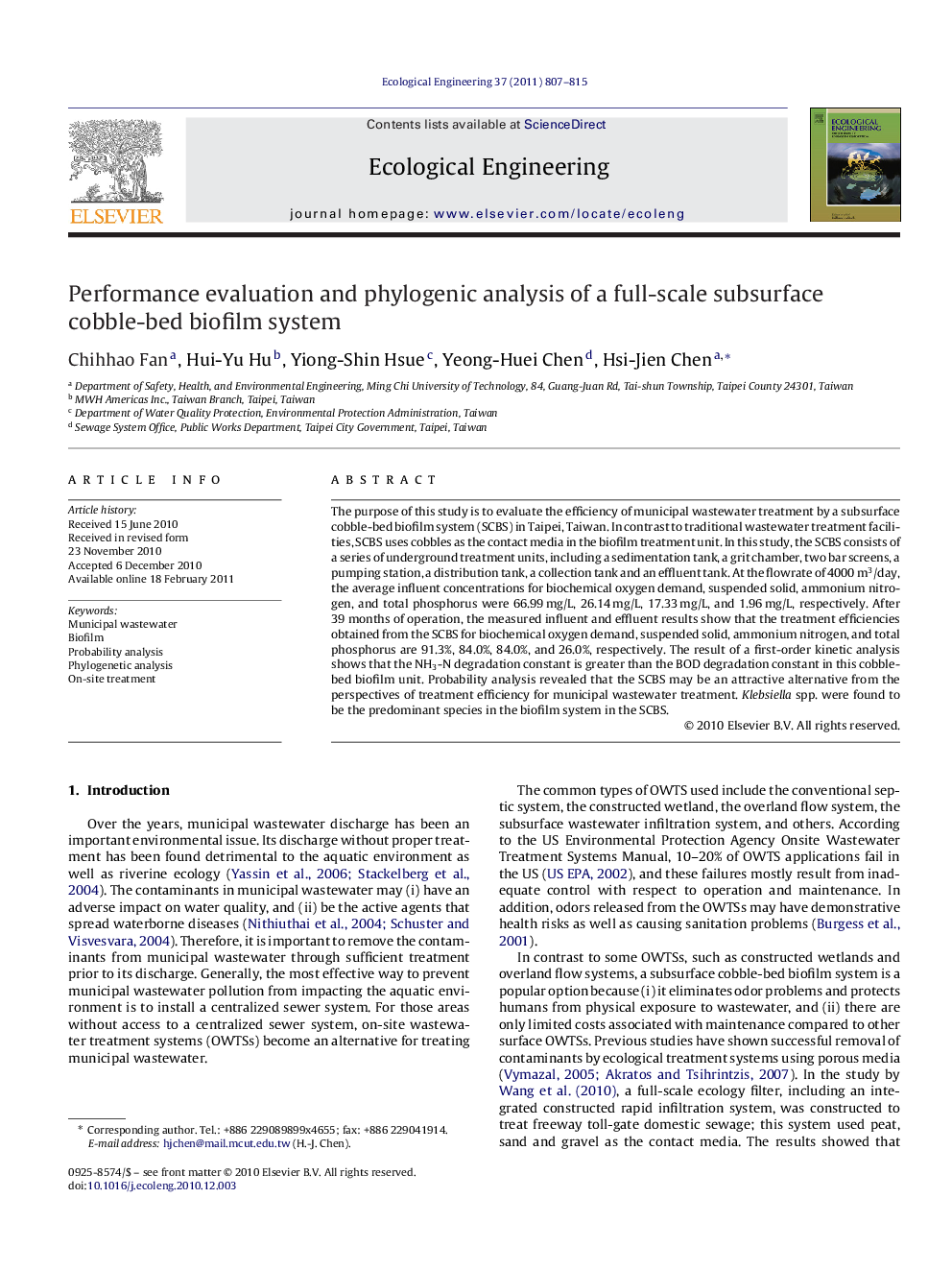| Article ID | Journal | Published Year | Pages | File Type |
|---|---|---|---|---|
| 4390310 | Ecological Engineering | 2011 | 9 Pages |
The purpose of this study is to evaluate the efficiency of municipal wastewater treatment by a subsurface cobble-bed biofilm system (SCBS) in Taipei, Taiwan. In contrast to traditional wastewater treatment facilities, SCBS uses cobbles as the contact media in the biofilm treatment unit. In this study, the SCBS consists of a series of underground treatment units, including a sedimentation tank, a grit chamber, two bar screens, a pumping station, a distribution tank, a collection tank and an effluent tank. At the flowrate of 4000 m3/day, the average influent concentrations for biochemical oxygen demand, suspended solid, ammonium nitrogen, and total phosphorus were 66.99 mg/L, 26.14 mg/L, 17.33 mg/L, and 1.96 mg/L, respectively. After 39 months of operation, the measured influent and effluent results show that the treatment efficiencies obtained from the SCBS for biochemical oxygen demand, suspended solid, ammonium nitrogen, and total phosphorus are 91.3%, 84.0%, 84.0%, and 26.0%, respectively. The result of a first-order kinetic analysis shows that the NH3-N degradation constant is greater than the BOD degradation constant in this cobble-bed biofilm unit. Probability analysis revealed that the SCBS may be an attractive alternative from the perspectives of treatment efficiency for municipal wastewater treatment. Klebsiella spp. were found to be the predominant species in the biofilm system in the SCBS.
